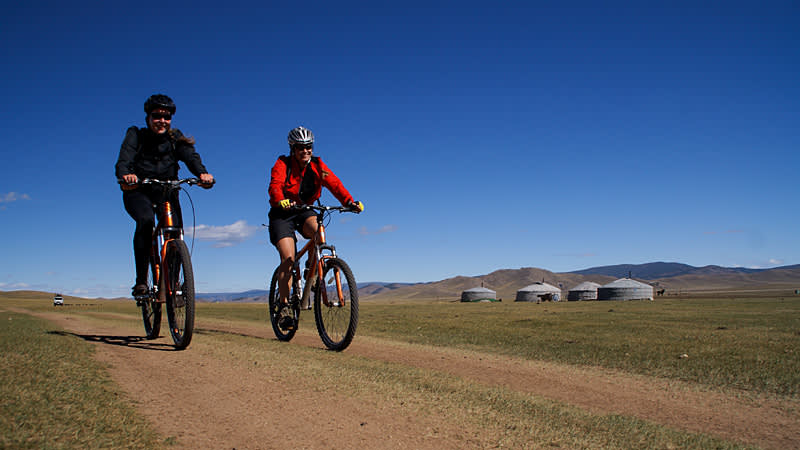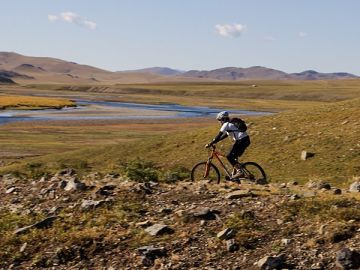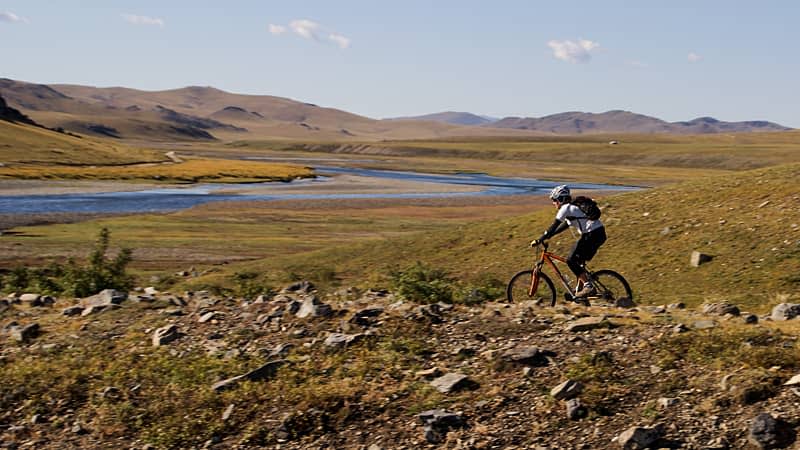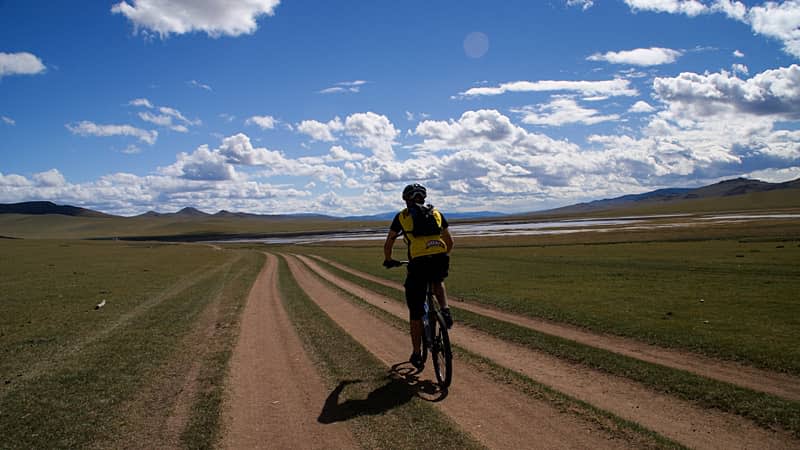Read time – 3 minutes
To call Mongolia remote is to do the place an injustice. The world’s most sparsely populated country feels in places as if it contains nothing but the azure sky and the rolling, windswept steppe.
Camped in the middle of this wild landscape, it is hard to imagine these people once subdued the mightiest armies of the world – there’s nobody here.
Cycling the Mongolian Steppe
But look again: perhaps the answer to this puzzle lies in the steppe after all. The great plains are unpunctuated by trees or dwellings, and spread almost as far as the eye can see before rippling into cold, rocky mountains.
Our little encampment feels minuscule against such terrain. The steppe may look verdant in pictures, but close up the harshness of life is evident.
This is not lush, dewy grassland, but hard, often stony earth. Besides the rugged grasses, the majority of plants are scrubby, ankle-height shrubs – the only vegetation with enough grit to make it through the Mongolian winter.
Winter in Mongolia
Back in Ulaanbaatar (UB to those in the know), our guide told us the cold in winter varies from the harsh to the ferocious. Mongolians call particularly severe winters the zud, and the zud comes in many flavours.
The black zud is a deep freeze without snowfall. The white zud is the opposite – the land is buried beneath a deep layer of snow. Worst of all is the temur zud – the iron zud – where heavy rainfall is frozen by plunging temperatures, encasing pastures in an impenetrable layer of ice.
It is a bad time to be a goat or a goatherd. After surviving in such cruel conditions, perhaps the real wonder is that Genghis Khan – or Chinggis as they call him here – only managed to conquer the majority of Eurasia, and stopped short of the globe.
Out on the steppe, I am mightily glad that winter is a good few months off, but as the sun dips towards the horizon it is still chilly.
 Cycling from camp
Cycling from camp
Where the steppe ends, the sky begins. It is a fickle beast, that sky, and changes fast. Earlier today as we rode we watched a black thunderstorm billow over the mountains to the south and deluge the steppe ahead.
The torrent narrowly missed us and minutes later the sky was a sparkling blue once more. Now the blue fades to lilac as the sun sinks, and soon our camp is cloaked in darkness.
Camping in the Mongolian Steppe
Un-hazed by water vapour and un-brightened by the light of settlements the blanket of stars is awe-inspiring. If I felt minuscule against the steppe during the day, now I feel microscopic.
 Camping in the steppe
Camping in the steppe
The stars are like nothing I have ever seen. Firstly, they are so numerous. I didn’t realise the sky could fit so many stars in. Some ablaze with incredible light, others are tiny and barely perceptible.
Then there are the colours. I thought the night sky was black, but here it is blue and purple, the fringes of the milky way clearly visible, cloudy like ink dropped into water. It is hard to tear my eyes away, but I suppose I have to sleep at some point.
And then it’s over. All too soon we are bouncing back into the outskirts of UB. When we arrived, the city seemed comfortingly familiar, with its department stores jostling for attention against glistening, glassy office blocks, a building site on every corner.
Now the modernity jars – I want my wilderness back. But it is not as far away as I think. Looking down the main street I see snowy peaks beyond the offices. The tower cranes have not tamed Mongolia just yet, then.
A two-wheeled adventure is one of the best ways to experience this incredibly remote country.
If you’re inspired to go cycling in Mongolia, view our trips below.

 Cycling in Mongolia
Cycling in Mongolia Cycling the Mongolian steppe
Cycling the Mongolian steppe Cycling adventure in Mongolia
Cycling adventure in Mongolia




